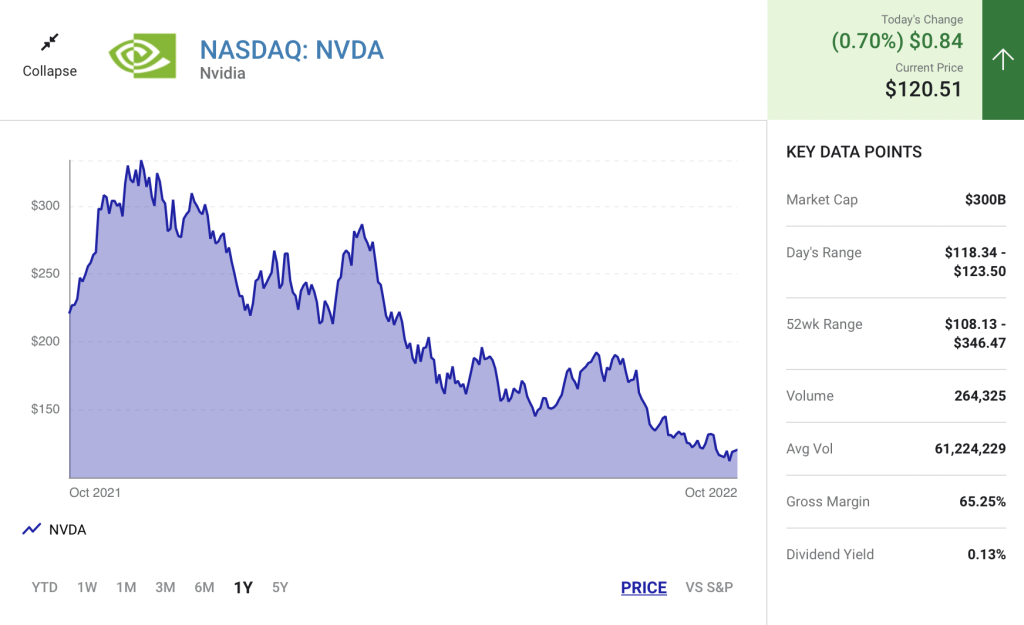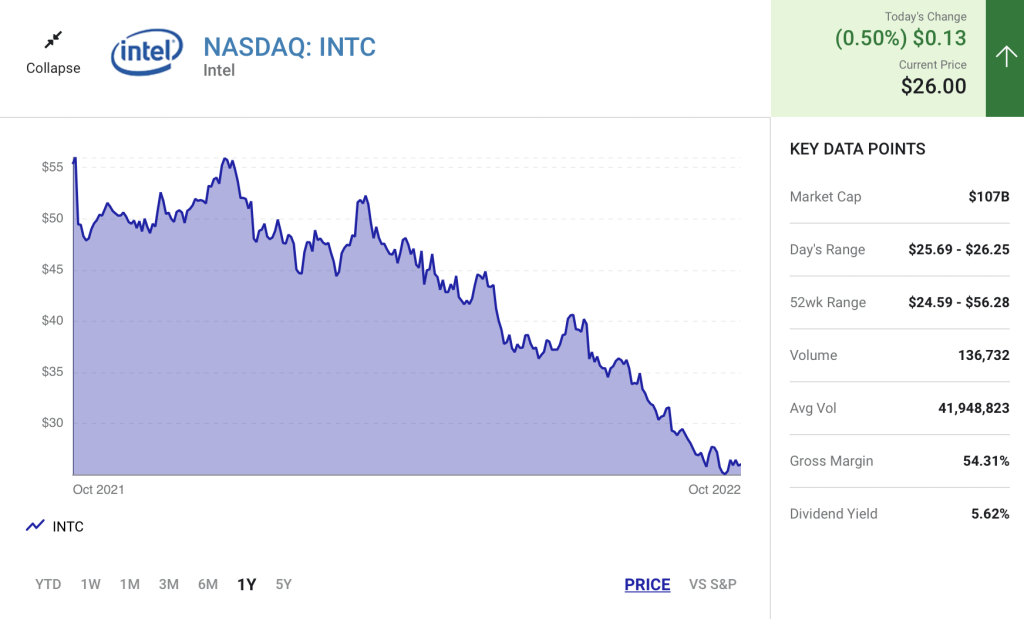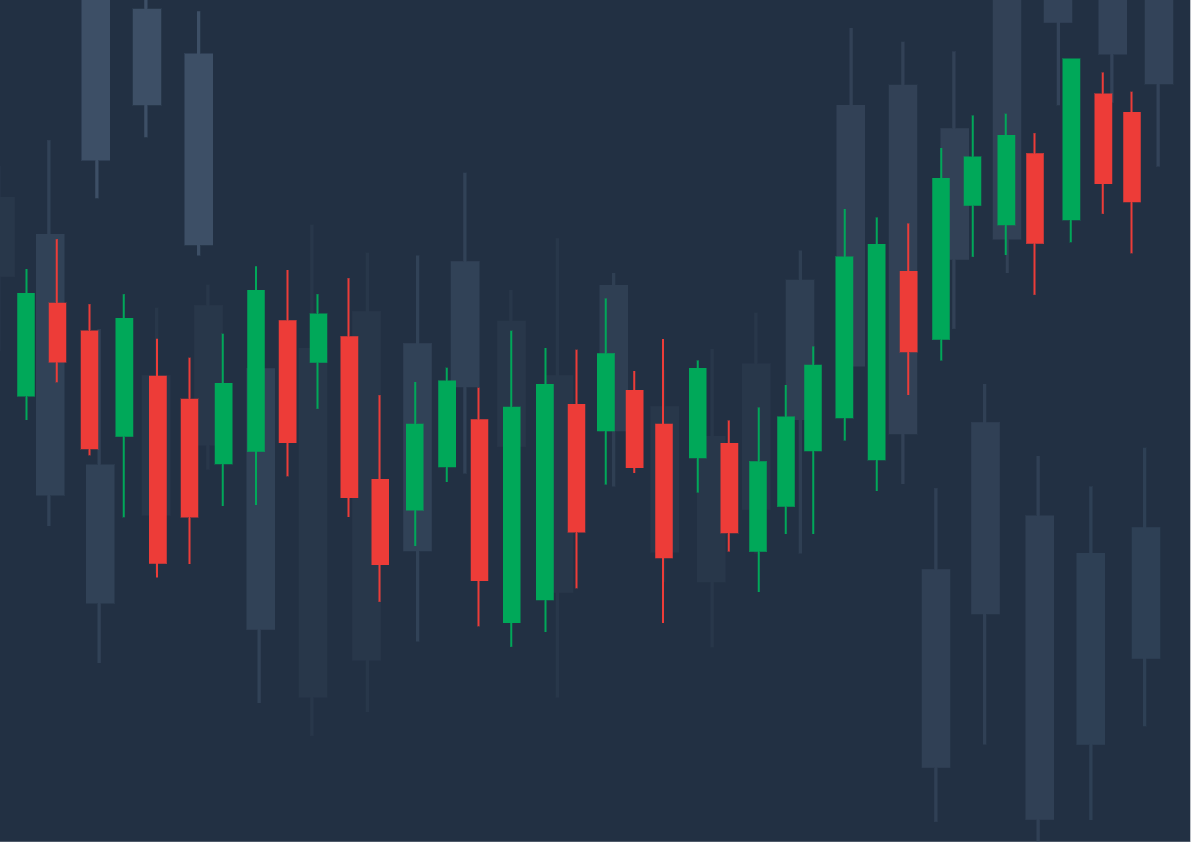Select analysts believe these beaten-down chipmakers can deliver triple-digit returns.
There’s no sugarcoating it: This has been a miserable year for professional and everyday investors. Regardless of whether you’re new to investing or have been putting your money to work on Wall Street for decades, short-term losses in the three major U.S. indexes have put a dent in most portfolios.
Since hitting their respective all-time highs between mid-November and the first week of January, the iconic Dow Jones Industrial Average, broad-based S&P 500, and technology-fueled Nasdaq Composite have plunged by as much as 22%, 28%, and 38%. This places all three indexes firmly in a bear market.
But when there’s pain on Wall Street, there’s always opportunity — and analysts know it. This may be especially true for the tech stocks that have really taken it on the chin since the year began.
For instance, semiconductor stocks have been taken to the woodshed on the growing prospect of a recession amid higher interest rates and persistent supply chain issues. But widening the lens a bit creates a far different outlook.
Based on a report from Fortune Business Insights, the global semiconductor market should near $1.4 trillion in value by 2029 and sustain a compound annual growth rate above 12% over the next seven years. In other words, patience could pay off handsomely for chip-stock investors.
What follows are two semiconductor stocks that offer upside ranging from 149% to as much as 178%, according to Wall Street.

Nvidia: Implied upside of 149%
The first chipmaker and solutions specialist with incredible upside potential is former top-10 market cap company Nvidia (NVDA 0.70%). Analyst Pierre Ferragu of New Street Research foresees Nvidia hitting $280, which would imply a hearty 149% gain from where shares ended last week.
Ferragu, who increased New Street’s price target on Nvidia in April, believes crypto-driven weakness will be short-lived, and that the company’s data center business will be a significant long-term growth driver.
Although Nvidia is best-known for developing and selling the graphics cards used in personal computers for gaming, the company’s data center solutions appear well positioned to take advantage of a shifting data climate. Though businesses were already moving data into the cloud well before the COVID-19 pandemic, the pace of this shift has picked up considerably in its wake. As data center demand increases, so should this high-margin opportunity for Nvidia.
Something often overlooked about Nvidia is the company’s fast-growing professional visualization segment. Though it, too, is prone to cyclical weakness, this segment offers sustainable double-digit sales growth potential during long periods of economic expansion.
Professional visualization is the springboard that can help Nvidia become a key player in the metaverse — i.e., the next iteration of the internet that’ll allow connected users to interact with each other and their environment in 3D virtual worlds. The software and infrastructure needed to bring the metaverse to life will take years to develop. Nevertheless, the metaverse represents a multitrillion-dollar opportunity over the long run.
However, Nvidia is also contending with aforementioned supply chain challenges, and new regulations from Washington that restrict technology chip sales/exports to China. With a lot of near-term revenue uncertainty tied to this new regulation, it seems highly unlikely that Nvidia will approach New Street’s price target anytime soon.
Intel: Implied upside of 178%
The second semiconductor stock with a boatload of potential upside, according to Wall Street, is Dow Jones component Intel (INTC 0.50%). Analyst Ivan Feinseth of Tigress Financial has a $72 price target on shares of Intel, which represents upside of 178% from where shares of the company closed last week.
Feinseth’s price target, which was upped from $68 to $72 in January (i.e., before the broader market meltdown), is based on the expectation that Intel’s investments in processor innovation should allow it to generate abundant cash flow and remain highly competitive.
Interestingly, one of Nvidia’s biggest cash flow drivers happens to also be one of Intel’s. As more data is moved by businesses into the cloud, demand will grow for data center servers. Intel holds the lion’s share of central processing unit (CPU) market share for data center servers.
That leads into the next point: Intel’s market share demise is greatly overstated. Although Advanced Micro Devices (AMD -1.19%) has made inroads and chipped away at Intel’s CPU share in personal computers (PCs), mobile, and data center servers, Intel’s share losses in these segments have been nominally small. When viewed with a wider lens, intel is still the dominant CPU provider in PCs, and it’s well ahead of AMD in mobile and data center servers.

Looking a bit further down the line, Intel should be one of the key beneficiaries of the CHIPS and Science Act, which President Joe Biden signed into law in August. This law provides nearly $53 billion in subsidies for chipmakers to build domestic manufacturing plants and conduct research. Intel is already deploying $20 billion to build two manufacturing plants in Ohio. With potential subsidies in its sails, Intel is incented to expand its internal production/foundry capabilities to meet the demands of an increasingly digitized and tech-dependent world.
Optimists will also be intrigued by the upcoming spinoff and initial public offering (IPO) of autonomous vehicle segment Mobileye. Intel purchased Mobileye for $15.3 billion five years ago, but believes the company could fetch a $30 billion valuation for its IPO. Mobileye’s sales surged 41% to $460 million in the June-ended quarter, which is all the more impressive considering the challenges the U.S. economy faced during the second quarter.
But just like Nvidia, Intel has multiple headwinds to contend with. Economic weakness, coupled with the China export ban, is likely to slow chip demand. Further, it’ll still be a few years before the company reaps the rewards of increased manufacturing capacity. While shares of Intel are ripe for the picking by long-term investors, Feinseth’s price target of $72 appears out of the question anytime soon.
Read Next – The ‘EVERYTHING CHIP’
A new industry is being built around an “everything chip”… that’s more sophisticated than the chips in your smartphone or laptop.
One little-known company is at the forefront of this technology, and the man CNBC nicknamed “The Prophet” says this company will be “America’s Next Big Monopoly.”
Best of all, you can buy this stock for less than $10. It’s no wonder the smart money, like Cathie Wood and Bill Gates, has already invested over $350 million.
Click here for the full story.



